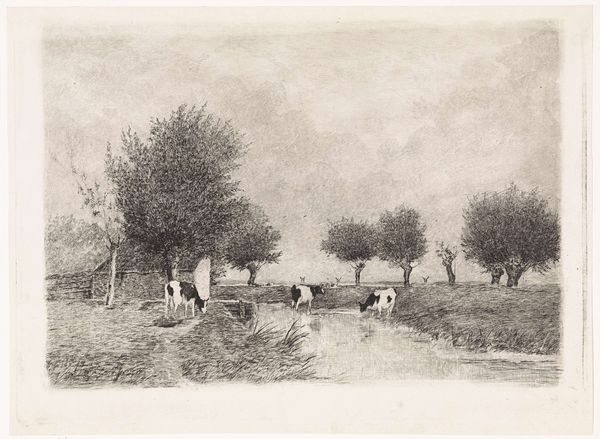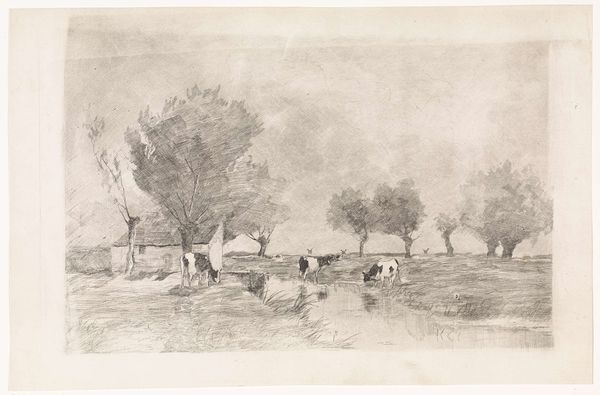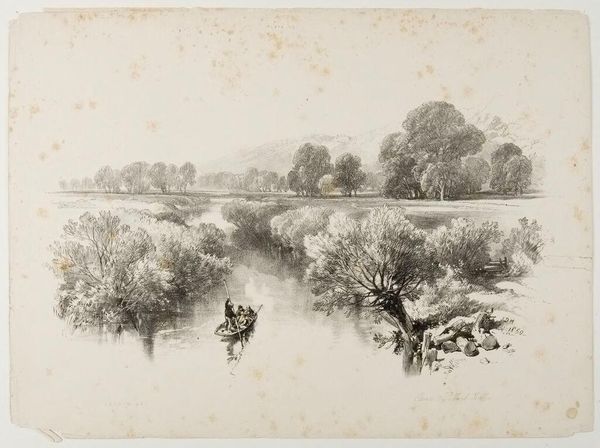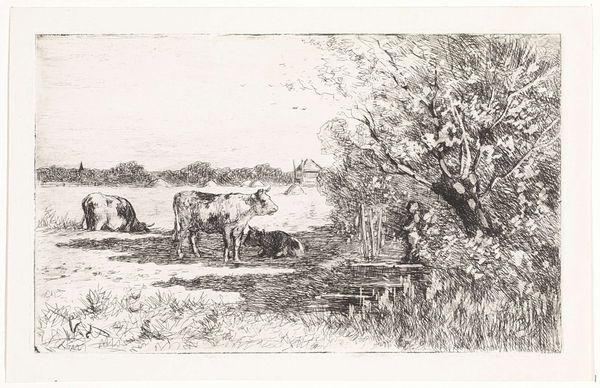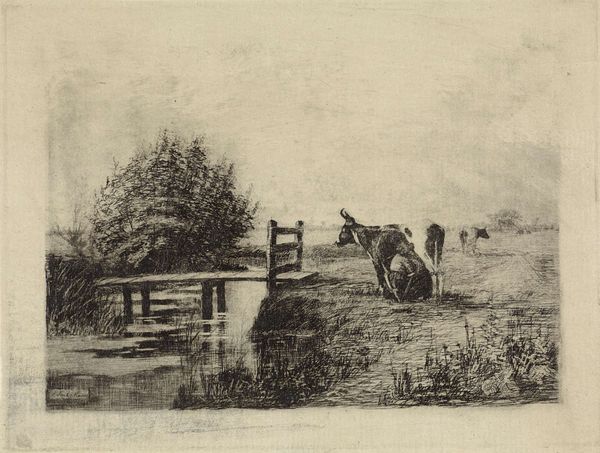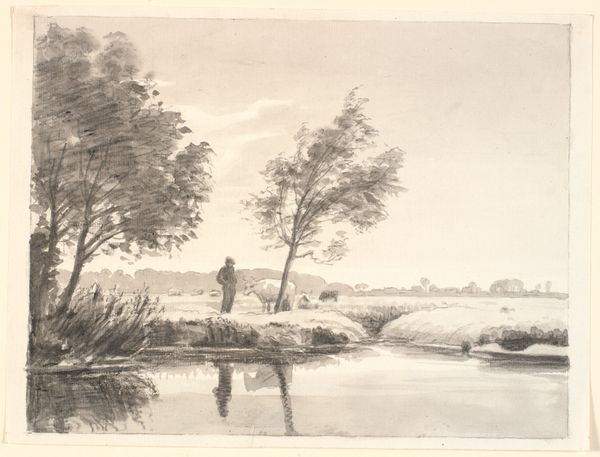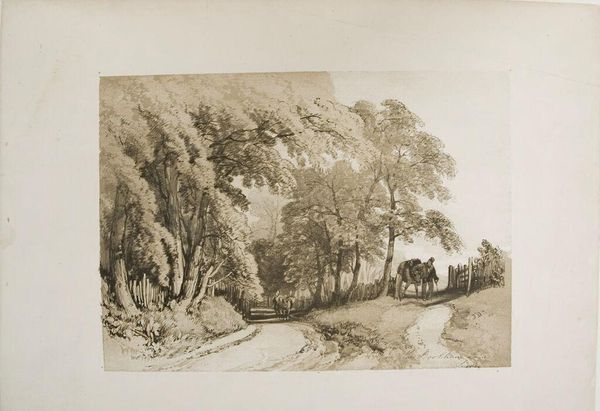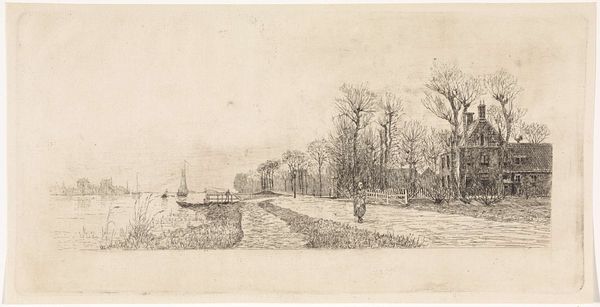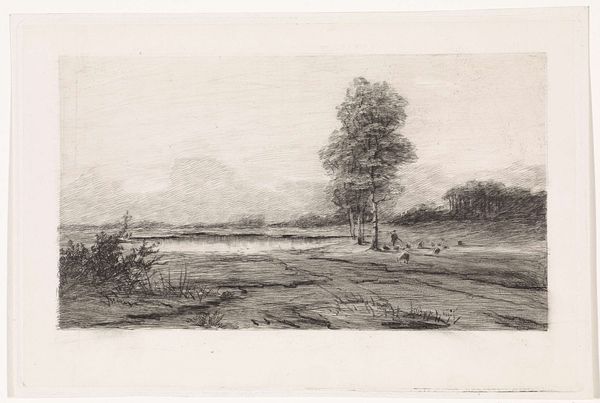
etching
dutch-golden-age
etching
landscape
etching
realism
Dimensions: height 221 mm, width 338 mm
Copyright: Rijks Museum: Open Domain
Editor: Here we have "Landscape with Three Cows by a Ditch", an etching by Elias Stark, dating somewhere between 1859 and 1890. There’s something quite calming about this scene, though it’s rendered with such fine, almost scratchy lines. What catches your eye in this work? Curator: It’s fascinating to consider Stark’s choice of etching for this seemingly straightforward rural scene. Etching, a process of controlled corrosion, inherently links the pastoral ideal with the material realities of production. Think about the acid, the copper plate, the labor involved in creating this image. How does this influence our perception of the scene, compared to, say, an oil painting of the same subject? Editor: That’s interesting. I hadn't really thought about the connection between the process and the image itself. The etching technique almost makes the idyllic scene feel more... real? Curator: Precisely. Stark isn't just depicting cows; he's presenting us with a mediated view of labor, of the land’s economic potential. These aren't just picturesque cows; they represent a form of capital, a crucial component of the Dutch agrarian system. Consider how the Dutch Golden Age elevated genre scenes of everyday life. Editor: So the medium itself emphasizes the everyday economic activities portrayed in the landscape? Curator: Absolutely. Stark’s conscious decision to use etching highlights the means of production, making visible the connection between labor, materiality, and ultimately, the economic reality underpinning the landscape's apparent tranquility. Editor: That makes me think about the market for etchings like this. Were they common? Who was buying them? Curator: They were indeed quite popular, a more accessible and reproducible art form. A growing middle class with an interest in art. And an interesting insight is thinking about these in the modern mass production world! It seems counterintuitive doesn't it? Editor: Yes! I hadn't considered that mass consumption element, too. Thinking about this artwork’s materiality and mode of production gives it a whole new dimension. Curator: Exactly! By thinking materially about art, we open ourselves to broader conversations about value, labour, and the social systems that shape our understanding.
Comments
No comments
Be the first to comment and join the conversation on the ultimate creative platform.

